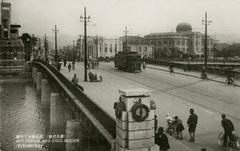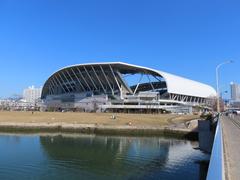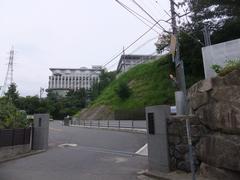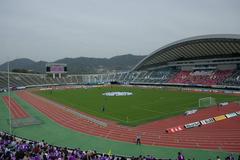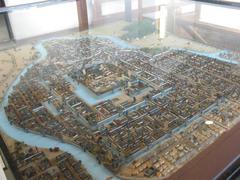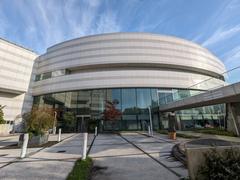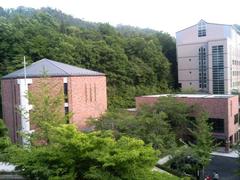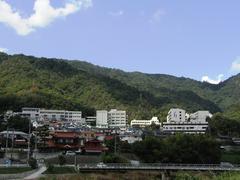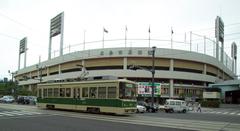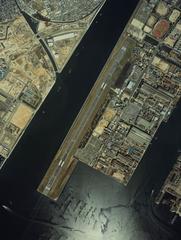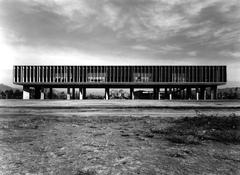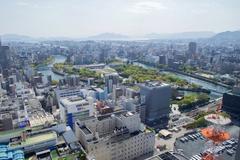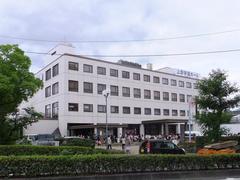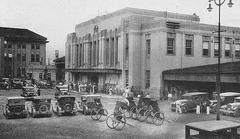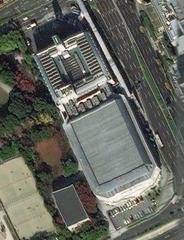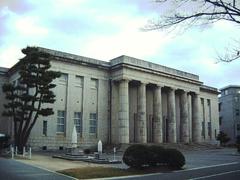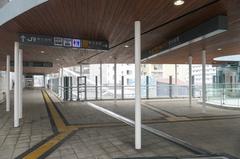
Hiroshima Port Station: Visiting Hours, Ticketing, and Guide to Hiroshima’s Historical and Cultural Sites
Date: 04/07/2025
Introduction
Hiroshima Port Station (formerly Ujina Port) is a pivotal gateway connecting travelers to Hiroshima’s historical, cultural, and natural treasures. Since its establishment in the late 19th century, the port has transformed from a strategic military hub into a modern transit point, seamlessly linking Hiroshima City to the Seto Inland Sea and renowned destinations like Miyajima and Peace Memorial Park. With comprehensive facilities, convenient ticketing, and direct access to major attractions, Hiroshima Port Station is an ideal starting point for both local exploration and island adventures (city.hiroshima.lg.jp; MarineLink; Japan Shore Excursions; MLIT).
Table of Contents
- Historical Overview of Hiroshima Port
- Strategic and Urban Development
- Reconstruction and Modernization
- Terminal Facilities and Accessibility
- Visiting Hours and Ticketing Information
- Transportation Connections
- Nearby Historical and Cultural Attractions
- Practical Tips and Accessibility
- Frequently Asked Questions (FAQ)
- Summary and Recommendations
- Further Resources and Official Links
Historical Overview of Hiroshima Port
Hiroshima Port, originally Ujina Port, traces its origins to 1884 and was completed in 1889, driven by land reclamation and the vision of prefectural governor Sadaaki Senda. The port quickly became integral to Hiroshima’s economic and strategic ambitions, with its development coinciding with the expansion of the Sanyō Railroad, linking Hiroshima to national transportation networks. During the First Sino-Japanese War and through World War II, the port played a vital military role, serving as a critical embarkation point for troops and supplies (city.hiroshima.lg.jp; aboutjapan.japansociety.org).
The port’s expansion fueled urban development—filling castle moats, extending electric railway lines, and fostering industry. Although devastated by the atomic bombing in 1945, Hiroshima Port’s infrastructure played a central role in the city’s postwar recovery and economic revival (pref.hiroshima.lg.jp).
Strategic and Urban Development
Hiroshima Port’s location on the Seto Inland Sea, approximately 3 km from the city center, made it a strategic trade and military hub. Industrial zones, new streetcar lines, and the integration of the port with Hiroshima’s tram and bus networks spurred economic and urban growth, transforming the cityscape throughout the 20th century. The introduction of the Hiroshima Electric Railway’s streetcar network in 1912 remains central to city mobility, directly connecting the port to key districts and attractions (city.hiroshima.lg.jp; wikipedia.org).
Reconstruction and Modernization
After World War II, Hiroshima Port continued to evolve, anchoring redevelopment projects and urban renewal. The First City Re-Development Plan (1981–1999) revitalized areas around Hiroshima Station and the port, while modern facilities like Mazda Stadium and expanded transportation links reaffirmed the port’s role as Hiroshima’s maritime and tourism gateway. Today, the Hiroshima Port Ujina Passenger Terminal features state-of-the-art amenities and is the centerpiece of the Minato Oasis Hiroshima initiative, promoting economic development and community engagement (city.hiroshima.lg.jp).
Terminal Facilities and Accessibility
Main Passenger Terminals
Hiroshima Port Station consists of modern terminals accommodating cruise liners and local ferries. The Ujina Foreign Trade Wharf (280m) handles large vessels, while the Itsukaichi Wharf (430m) supports international cruise ships up to 100,000 tons (MarineLink; MLIT).
Amenities
- Spacious waiting areas with bilingual signage
- Tourist information center offering multilingual assistance
- Free Wi-Fi and charging stations
- Currency exchange and luggage storage
- Barrier-free facilities: ramps, elevators, tactile paving, accessible restrooms
- Taxi stands, shuttle, and bus connections
Landmark
- Tower of Paradise: A striking silver spire, symbolizing Hiroshima’s spirit of peace and commemorating the port’s centenary (ForeverKaren).
Visiting Hours and Ticketing Information
Visiting Hours
- Passenger terminals: Open 7:00 AM to 8:00 PM daily, with some variation based on cruise and ferry schedules.
- Ferry ticket counters: Open from early morning until the last scheduled departure.
- Streetcar services: Operate from approximately 5:30 AM to midnight.
Ticketing
- Ferry tickets: Purchase at terminal counters, vending machines, or online. Fares to nearby islands (Miyajima, Etajima) range from ¥180–¥500 (Cestee).
- Cruise ship boarding: Tickets are arranged through cruise operators; the port is a docking and embarkation point.
- Streetcar/bus tickets: Single rides around ¥180–¥270. Day passes (including Meipuru-pu sightseeing bus) cost ¥600–¥700 (JapanTravel).
- Visit Hiroshima Tourist Pass: Covers trams, buses, and some ferries, with options for 1, 2, or 3 days and discounts on attractions (Cestee).
- IC cards: Suica, ICOCA, PASPY accepted on most city transport.
Transportation Connections
Tram (Streetcar)
Hiroshima’s Hiroden streetcar network is the most popular route to the port:
- Line 1: Hiroshima Station – Hondori – Hiroshima Port
- Line 3: Nishi-Hiroshima Station – Hiroshima Port
- Line 5: Hiroshima Station via Hijiyama-shita – Hiroshima Port
The journey from Hiroshima Station takes 40–50 minutes (JapanTravelNow).
Bus
City buses and the Maple-oop sightseeing bus connect Hiroshima Port Station to major districts. The Maple-oop is free for JR Pass holders.
Taxi and Bicycle
Taxis are readily available (fare: ¥1,500–¥2,500 from city center). Bicycle rental and bike lanes make cycling a pleasant option for nearby travelers.
Airport Access
From Hiroshima Airport, take the limousine bus to JR Hiroshima Station, then transfer to tram or taxi.
Ferry
Frequent ferries depart for:
- Miyajima (Itsukushima): 20–30 minutes, direct from the port
- Etajima and other islands: Tickets at terminal, regular departures
Schedules are bilingual and posted in the terminal (MLIT).
Nearby Historical and Cultural Attractions
Hiroshima Peace Memorial Park & Museum
- Distance: 25 minutes by tram from the port
- Museum Hours: 8:30 AM–6:00 PM (last entry 5:30 PM)
- Admission: ~¥200 (adults)
- Features: Atomic Bomb Dome, Peace Memorial Museum, Children’s Peace Monument, Cenotaph (Japan Shore Excursions)
Miyajima Island & Itsukushima Shrine
- Ferry: 30 minutes from Hiroshima Port
- Shrine Admission: ~¥300
- Highlights: Floating torii gate, Mount Misen, wild deer, cultural festivals
Hiroshima Castle
- Access: 30 minutes by tram/taxi
- Hours: 9:00 AM–6:00 PM
- Admission: ~¥370
- Features: Samurai museum, cherry blossoms, panoramic observation deck (Touropia)
Shukkeien Garden
- Access: Short tram ride
- Hours: 9:00 AM–6:00 PM
- Admission: ~¥260
- Features: Tea houses, seasonal flora, tranquil pond
Iwakuni & Kintaikyo Bridge
- Travel Time: 45 minutes by train from Hiroshima
- Features: Historic five-arch bridge, Iwakuni Castle, White Snake Museum
Other Recommendations
- Hiroshima Museum of Art: European and Japanese masterpieces
- Hondori Shopping Arcade: Shops and eateries
- Okonomimura: Hiroshima-style okonomiyaki food complex
- Ujina Market: Local seafood
Practical Tips and Accessibility
- Accessibility: Port and attractions are wheelchair accessible; low-floor trams, elevators, and ramps are common.
- Language: Bilingual signage; translation apps helpful for schedules.
- Lockers: Available at stations; limited at the port.
- Currency: Most facilities accept cash and major credit cards; some accept IC cards.
- Wi-Fi: Free Wi-Fi in terminals and on many transport lines.
- Arrive early: For ferries during busy seasons or festivals.
- Use passes: Day passes and tourist passes offer savings.
- Plan transfers: The port area is industrial; use public transport or taxis to reach attractions (About2Cruise).
Frequently Asked Questions (FAQ)
Q: What are Hiroshima Port Station’s visiting hours?
A: Terminals are open 7:00 AM–8:00 PM; streetcars run 5:30 AM–midnight. Check ferry schedules for specifics.
Q: How do I buy tickets for ferries and trams?
A: At terminal counters, vending machines, or online; IC cards and tourist passes are widely accepted.
Q: Is Hiroshima Port Station accessible for travelers with disabilities?
A: Yes, with barrier-free design, ramps, elevators, and accessible restrooms.
Q: What are the main attractions near Hiroshima Port?
A: Miyajima Island, Peace Memorial Park, Hiroshima Castle, Shukkeien Garden, and the Ujina district.
Q: Are guided tours available?
A: Yes, through local operators and from the tourist information center.
Summary and Recommendations
Hiroshima Port Station is more than a transportation hub—it’s a welcoming gateway to Hiroshima’s poignant history, resilient culture, and scenic beauty. With modern terminals, easy ticketing, and barrier-free design, visitors of all backgrounds can enjoy seamless access to world-class attractions. Plan your visit with up-to-date schedules and passes, and explore the best of Hiroshima from this vibrant starting point (city.hiroshima.lg.jp; MLIT; JapanTravel).
Further Resources and Official Links
- Hiroshima Port Overview (city.hiroshima.lg.jp)
- Hiroshima Port Details (MarineLink)
- Hiroshima Port Visitor Guide (WhatsInPort)
- Cruise and Port Tourism (MLIT)
- JapanTravel Hiroshima Access Guide
- Cestee Hiroshima Transport Guide
- Japan Shore Excursions – Hiroshima
- Touropia – Hiroshima Attractions
- Hiroden Streetcar Official Site
- Audiala App – Real-Time Travel Updates
Plan your Hiroshima adventure with confidence! Download the Audiala app for real-time travel updates, explore our related guides, and follow Hiroshima’s official channels for the latest news and tips.

